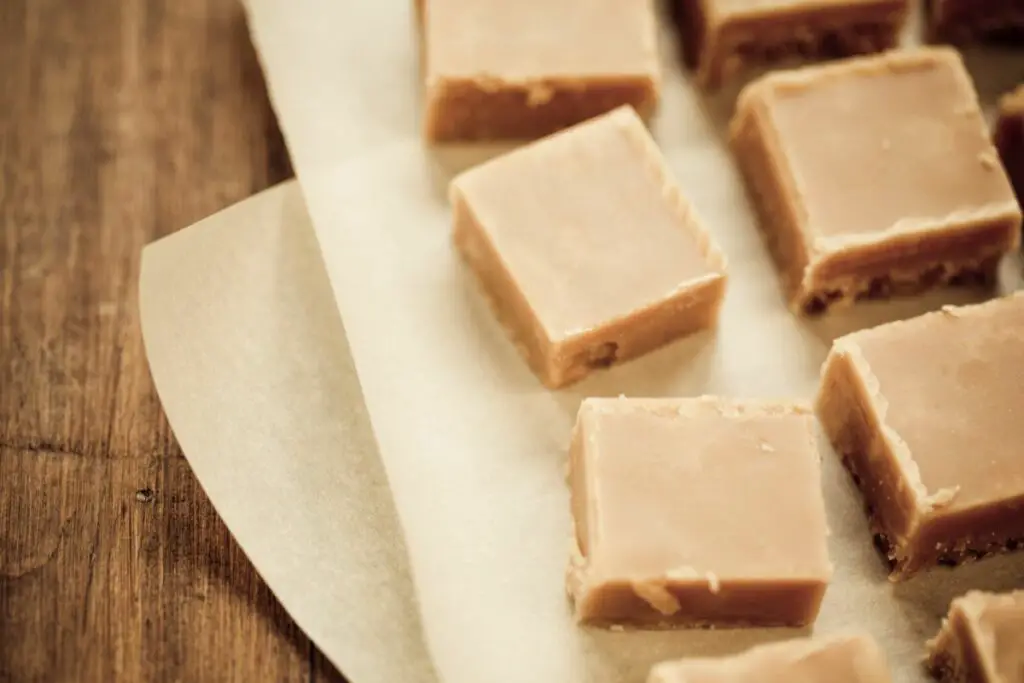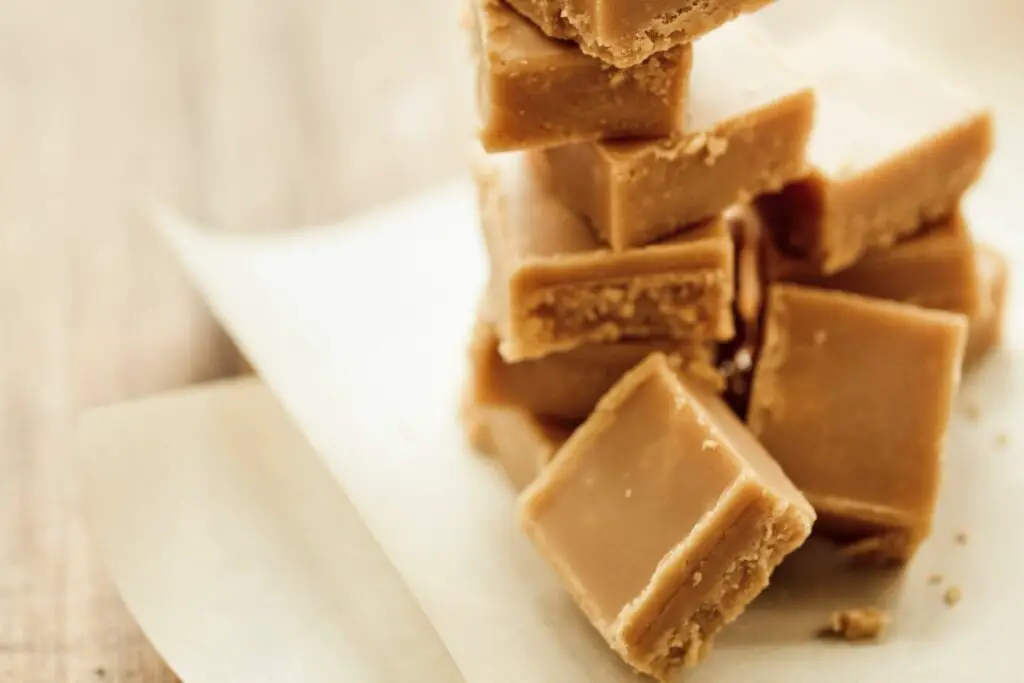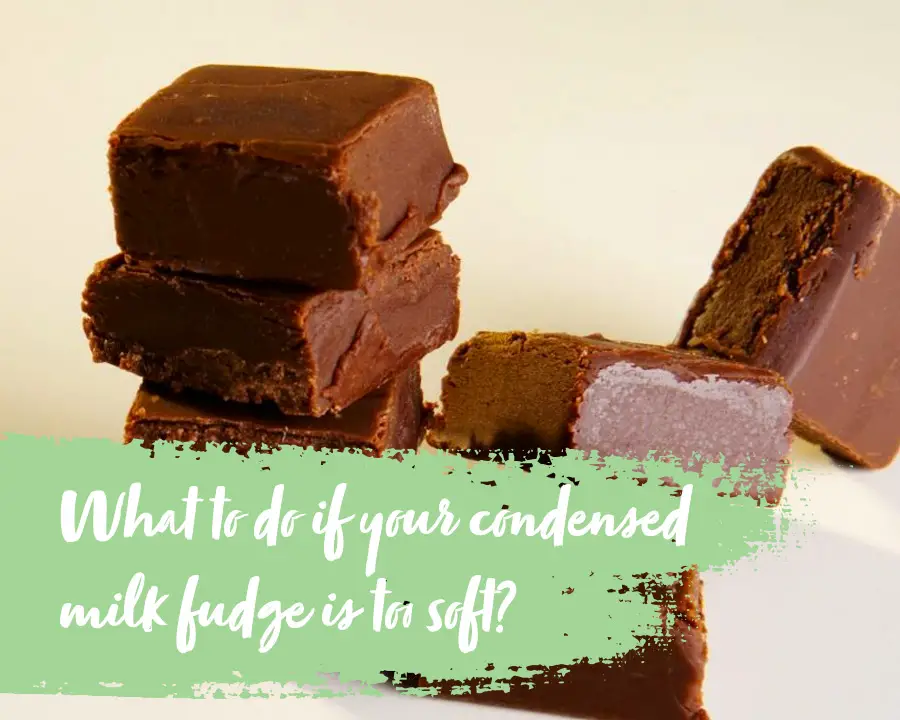While fudge only contains essential ingredients, the thought of making this sweet treat can strike many avid bakers with fear, since one is never certain it has been perfectly set. Sometimes, it may feel as if making perfect fudge is a hit-or-miss process!
One batch could be mouthwateringly perfect, with each square being a mouthful of deliciousness. However, the next could be a sloppy goop that won’t set regardless of how long you keep it in the refrigerator.
That said, the key to creating consistently delicious fudge treats is to understand the reasons why your fudge isn’t set in the first place.
Soft condensed milk fudge is often the result of an improper temperature of the mixture or when it is boiled incorrectly. Most recipes will outline the exact temperature it needs to reach. If you don’t boil your fudge long enough, or it doesn’t get hot enough, you’ll be ensured soft fudge.
When it comes to making the perfect fudge, you need to keep in mind the science behind it. Unless you understand the chemical process, as well as what is happening to the sugar once it is heated, then making fudge can be daunting.
Luckily for you, we have created this comprehensive guide exploring everything you need to know about fudge and what to do if your condensed milk fudge is too soft.
Let’s get straight into it!
What Should The Texture of Condensed Milk Fudge Be Like?

When it comes to candy, fudge is one of the rare exceptions where you want sugar crystals to be present. Here, tiny microcrystals provide the fudge with its iconic firm texture.
These crystals are small enough, however, that you won’t feel any graininess on your tongue, and, instead, just smoothness.
That said, while you want these crystals to form; you don’t want them to form too early. The key here is cooling.
When it comes to fudge, you want something that holds its shape, without being too hard, and, above all, it should be silky and melty in your mouth.
Therefore, the smaller the sugar crystals, the creamier your fudge is going to be. The key to successful fudge is the cooking and the beating after cooking, too.
Can I Fix Too Soft Fudge?
If your mixture has reached the correct temperature but still remains soft, then the likely problem is that the mixture didn’t achieve the desired temperature.
Here, all you have to do is return the mixture back to the pot and add at least 1 to 1.5 cups of water to the mixture.
Once done, you’ll want to redo the cooking process – ensuring you’re constantly checking the candy thermometer temperature or cold water test until the correct temperature has been achieved.
Why Is My Fudge Soft?
There are two different types of ‘soft fudge’. While some are more sticky with a toffee-like consistency, others simply won’t set at all.
The main factor causing both cases is related to the temperature. The sugar in the fudge has to reach and maintain a certain temperature in order to set correctly.
- Reason for soft fudge: toffee-like and sticky – The mixture hasn’t reached the correct temperature.
- Reason for soft fudge – The ingredients haven’t been sufficiently boiled in water to evaporate the mixture.
While the required cooking time varies considerably depending on the fudge, you should always watch the cooking process carefully to ensure your fudge reaches perfection.
Depending on the recipe, the exact point varies considerably, however, it is typically between the temperature of 234 and 239 degrees Fahrenheit. A candy thermometer is handy in these situations.
That said, if you don’t have a candy thermometer, you can simply drop a small amount of the mixture in cold water. Here, when the drop meets the water, it should form a soft ball.
Moreover, the recipe’s cooking time should only be used as a guideline, too. You should always maintain the correct temperature on the candy thermometer or continue the water-dropping method until the mixture is perfect.
When To Return The Mixture Back To The Pan?
When boiling the mixture at the correct temperature, you’ll want to beat the fudge mixture for a sufficient amount of time – this ensures that it will set correctly.
Typically, the time required to notice a change in consistency in the mixture is between 5 and 15 minutes.
While beating the mixture, you may notice some resistance as it begins to thicken. Plus, in a matter of seconds, it should start changing from a shiny-looking surface to one that is matte.
At this point, now is the time to add any nuts or additional ingredients of your choice. Once you have given the mixture a final swirl, scoop it immediately into your prepared tray.
Does Beating Affect Fudge?
Every avid fudge baker knows that making the perfect batch often involves a whole arm workout. After the hot mixture has been removed from the heat and has had 15 minutes to cool, it then has to be beaten.
This is generally done by hand. Although, you can use an electric mixer, too. Just make sure not to overbeat it.
To achieve the perfect creamy solid consistency, you should keep a close eye on any changes taking place in the bowl.
Take a wooden spoon, and beat the mixture energetically. If you were to overbeat your mixture, it will become hard and crystallize.
However, likewise, if you don’t beat it for long enough, it won’t set either and the result will be soft fudge.
If you don’t know how long you should be beating fudge, read this blog!
How Long Does Fudge Take To Set?

The key to getting a perfectly set fudge is patience. This isn’t the type of recipe you can make within one or two hours before serving.
At room temperature, the fudge takes approximately three hours to set. That said, for the best results, you should leave it out overnight.
During the setting process, it is important not to cut the fudge into squares until it is properly set.
Although once set, you can use a large chef’s knife to cut the fudge into small squares. Here, the blade should run smoothly through the mixture – coming out clean after each cut.
If the fudge is too soft, you can try to save the mixture by adding water and reheating it at a higher temperature.
Once ready, your fudge should be served in small, delicious squares.
What is The Difference Between Condensed Milk and Evaporated Milk?
In your fudge, you can either use condensed milk as opposed to evaporated milk. Plus, in many instances, you can substitute evaporated milk for normal milk, too. However, you won’t achieve the same textures or tastes.
When it comes down to it, one can of condensed milk is equal to one cup of evaporated milk with a cup of granulated sugar.
Typically, most recipes consist of evaporated milk, however, this can be replaced with regular milk and condensed milk depending on your preferences.
You can replace condensed milk with regular milk, however, you won’t achieve the same creamy, rich consistency that you achieve with sweetened condensed milk.
If you’re looking to use evaporated milk instead in your recipe, then you have to be extra cautious. This is because there is a huge difference between condensed milk and evaporated milk.
While 60% of the water is removed both from condensed and evaporated milk, they differ dramatically in both texture and sugar level.
Since condensed milk has a higher sugar content, it doesn’t need to be as heated as much as evaporated milk.
Similarly, condensed milk contains a creamier and denser texture which makes it suitable for making fudge as opposed to evaporated milk which has a more airy texture.
What To Do With Fudge That Flops?
Unless you’re an avid baker, making the perfect fudge the first time is sometimes a hard thing to achieve. However, that doesn’t mean you still can’t eat your fudge – even if it does flop!
Below, we have outlined some ideas on what to do with your fudge.
- Use it as a fudgy sauce over ice cream. Here, simply add some water to the mixture and reheat it. The result is a thick, creamy, runny fudge sauce.
- Layer it between cakes.
- Spoon the mixture into glasses and top with whipped cream and nuts. Allow to cool in the refrigerator and you have yourself individual desserts!
Final Thoughts
Fudge is among one of the hardest sweet treats to master. More often than not, the result is something of a gloopy mess that doesn’t resemble the perfectly set squares you find in the store.
That said, this doesn’t have to mean your mixture was a total disaster. Indeed, there are some techniques you can use to help reset your fudge if it’s too soft.
With the help of this guide, you’re sure to be making the perfect fudge in no time.
To learn more about condensed milk and the fudge you can make, check these posts:


